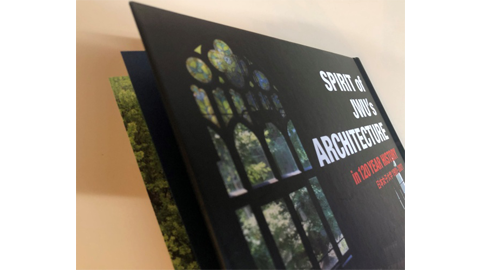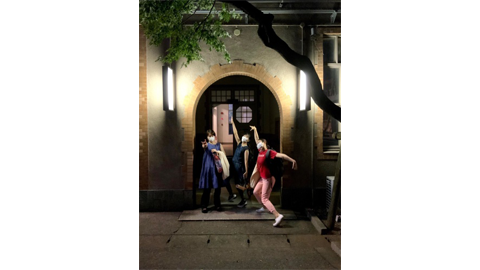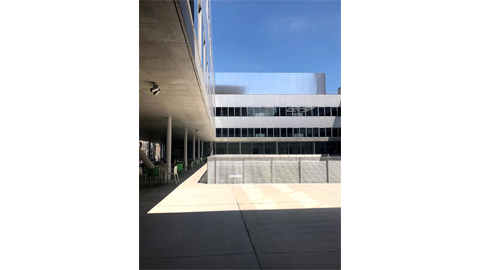外国語で発信!私の学生生活
外国語で発信!私の学生生活

O.R.さん
A Narrow but Wide University
I'm currently in my senior year, majoring in Housing and Architecture. When I entered the university, I thought that the campus was just small and cramped compared with other universities because the site is narrow with tall buildings, surrounded by residential areas. However, my understanding is changing.
Last year was the 120th anniversary of the foundation of JWU. To celebrate the anniversary, a photo album named the “Spirit of JWU’s Architecture” was distributed among teachers and students. The album looks back at the history of the university along with the changes to the architecture on campus.
As you flip the pages, you can see some buildings that no longer exist and some buildings that still remain. For example,“Syo-kei kan,” a building which was built in 1926. At that time, it was used as a classroom for high school. After that, it functioned as the laboratory of foreign languages and science while repeatedly being expanded and renovated. Now, it is mainly used by Housing majors.To know how to organize places of learning and how students spend their university lives reminds me of the huge trajectory of time we are all part of.
And, last year, the new campus, which was designed by our alumna Kazuyo Sejima, marked a new page in history. One of the buildings of the project is the “Hyakuniju-nen kan.'' When you look up from the sunken garden, the sky stretches out since the adjacent buildings are hidden even though the building is not very big. It creates a brand-new symbol in terms of giving us a large spatial experience.
I’m now impressed that the spread of time and space is included in such a small university.
狭くて広いキャンパス
私は卒業を控える住居学科の4年生である。私は大学に入学した頃、他の大学に比べ、住宅に囲まれた狭い場所に、敷き詰められるように建物が並ぶこの目白キャンパスを、窮屈だなと感じていた。だがその感覚は変わりつつある。
昨年、日本女子大学は創立120周年を迎えた。それを記念し、“Spirit of JWU’s Architecture”という写真集が教授や生徒に配布された。この写真集は、キャンパスにおける建築の変遷と共に、大学の歴史を振り返るというものである。
いざページをめくっていくと、今はもうなくなってしまった建物、また今もなお存在している建物をみることができる。1926年に建てられた樟渓館を例にあげると、竣工当時は高等部の教室だったそうで、その後、増築や改築を繰り返しながら、主に外国語や科学の分野の研究室として使われた。現在は主に住居学科が使用している。どのように学びの場が計画され、そこで当時の学生たちがどんな大学生活を送っていたかを知ることで、その場所に刻まれた時間の軌跡、いわば過去と現在を繋ぐ長くて大きい時間の流れに気付かされる。
そして、私たちの先輩、妹島和世氏によりデザインされた新キャンパス構想は、大学の歴史にまた新たな1ページを加えた。構想の一つである百二十年館は、建物自体はそれほど大規模ではないにも関わらず、サンクンガーデンから上を見上げると、隣接する建物が隠れ、視界めいっぱいに空が広がっていく。大きい空間体験はキャンパスに新たなシンボルを作り出しているのだ。
こうして今、私は、この狭い大学の中に、時間、そして空間の広がりが内包されていることを実感している。














